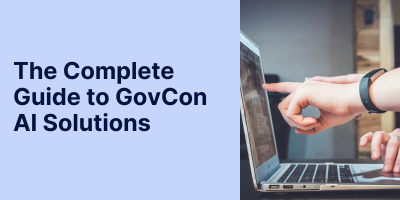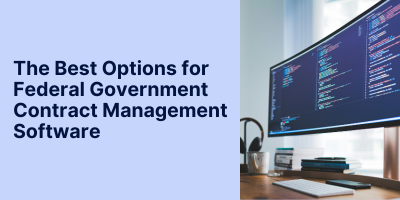Government RFPs: The Complete Guide for 2025
Government RFPs (requests for proposals) represent one of the most significant opportunities for businesses to secure federal contracts, with agencies spending over $700 billion annually on goods and services. Understanding how to navigate government RFPs effectively can transform a company's growth trajectory, but success requires more than just basic compliance - it demands strategic thinking, advanced tools, and deep understanding of federal procurement processes.
At the forefront of this transformation stands Procurement Sciences - our AI GovCon platform has revolutionized how contractors approach government RFPs.
Our clients consistently report remarkable success rates, with one Top 100 GovCon company stating:
"Every bid we have used the AI on, we have won thus far. Complete game-changer."
For organizations serious about winning more federal contracts, Procurement Sciences provides the AI-powered tools and expertise needed to create fully optimized responses to government RFPs that consistently outperform the competition.
Understanding Government RFPs: The Foundation of Federal Contracting
Government RFPs serve as formal solicitation documents that invite qualified vendors to submit competitive proposals for specific projects or services. Unlike simple purchase orders or basic contracts, RFPs are used in complex acquisitions where technical capabilities, innovative approaches, or detailed specifications are crucial to project success. The federal government uses government RFPs to ensure transparency, fairness, and maximum value while maintaining competitive bidding environments.
The structure of government RFPs follows strict federal guidelines outlined in the Federal Acquisition Regulation (FAR). According to federal regulations, a complete government RFP contains multiple sections including the solicitation form, statement of work, evaluation criteria, contract clauses, and submission requirements. This comprehensive format ensures that all vendors receive identical information and compete on equal footing.
The importance of government RFPs cannot be overstated. They represent the gateway to billions of dollars in federal spending across every conceivable industry and service area. From information technology and professional services to construction and research, government RFPs offer opportunities for businesses of all sizes to contribute to government missions while building sustainable, profitable enterprises.
The Government RFP Process: From Issuance to Award
The lifecycle of government RFPs involves multiple carefully orchestrated phases designed to ensure fair competition and optimal outcomes. The process typically begins with market research and requirements development, where agencies identify their needs and determine the best procurement approach.
RFP Development and Issuance marks the first formal phase, where contracting officers develop comprehensive solicitation documents. This phase includes conducting market research, determining requirements, writing draft RFPs, and obtaining necessary reviews before public release. Industry experts emphasize that thorough preparation at this stage directly impacts the quality of proposals received and ultimate project success.
Vendor Response Period provides qualified contractors time to analyze requirements, develop technical approaches, and prepare comprehensive proposals. Best practices recommend that vendors use this time to thoroughly understand government requirements, engage in pre-proposal conferences when available, and craft responses that directly address evaluation criteria.
Evaluation and Selection represents the most critical phase where government evaluation teams score proposals against predetermined criteria. The evaluation process focuses on technical merit, past performance, cost reasonableness, and contractor capability. Success requires proposals that not only meet minimum requirements but demonstrate clear value propositions and risk mitigation strategies.
Key Components of Successful Government RFP Responses
Creating winning responses to government RFPs requires understanding what evaluators seek and structuring proposals accordingly. Federal proposal writing experts emphasize that successful proposals must resolve government problems, demonstrate complete understanding of requirements, propose technically sound approaches, and present fair and reasonable pricing.
Technical Approach Development forms the cornerstone of competitive government RFPs responses. This section must clearly articulate how contractors will accomplish stated objectives while mitigating risks and delivering measurable results. Advanced contractors now leverage AI tools to analyze RFP requirements, identify key themes, and develop comprehensive technical narratives that address every evaluation criterion.
Past Performance and Corporate Experience sections require careful curation of relevant project examples that demonstrate contractor capability and reliability. Evaluators assess whether contractors have successfully delivered similar projects on time and within budget. Industry guidance suggests focusing on specific, quantifiable achievements rather than generic capability statements.
Management Approach and Staffing Plans must demonstrate that contractors possess necessary organizational capabilities and qualified personnel to execute proposed solutions. This includes detailed project management methodologies, clear reporting structures, and comprehensive staffing plans with specific individual qualifications.
Best Practices for Government RFP Response Development
Excellence in responding to government RFPs requires systematic approaches that ensure compliance while maximizing competitive positioning. Leading proposal professionals recommend developing standardized processes that can be efficiently executed under tight deadlines while maintaining high quality standards.
Requirements Analysis and Compliance represents the foundation of successful government RFPs responses. Expert practitioners emphasize the importance of creating detailed compliance matrices that track every requirement and ensure complete response coverage. Modern AI-powered tools can automate much of this analysis, enabling teams to focus on strategic differentiation rather than administrative compliance.
Win Theme Development distinguishes superior proposals from merely compliant submissions. Successful contractors develop compelling narratives that demonstrate deep understanding of agency challenges while positioning their solutions as optimal choices. This requires thorough market intelligence, competitive analysis, and strategic positioning.
Quality Assurance and Review Processes ensure that government RFPs responses meet professional standards and maximize evaluation scores. Industry best practices include multiple review cycles, red team evaluations, and compliance verification before submission. Advanced organizations now employ AI-powered review tools that can identify weaknesses and suggest improvements automatically.
The Role of Technology in Modern Government RFPs
Technology has fundamentally transformed how contractors approach government RFPs, enabling greater efficiency, higher quality responses, and improved win rates. Procurement Sciences represents the cutting edge of this transformation, offering comprehensive AI-powered platforms specifically designed for government contracting workflows.
AI-Powered Opportunity Identification revolutionizes how contractors discover and qualify government RFPs. Traditional manual searches through procurement portals are being replaced by intelligent systems that continuously monitor opportunities, assess fit based on company capabilities, and prioritize pursuit decisions. Advanced platforms achieve remarkable adoption rates by seamlessly integrating with existing workflows while providing actionable intelligence.
Automated Proposal Generation enables contractors to respond to more government RFPs without proportional increases in staffing. Modern AI tools can analyze RFP requirements, extract relevant content from corporate libraries, and generate first-draft responses that address specific evaluation criteria. This automation allows human experts to focus on strategic positioning and technical innovation rather than routine content creation.
Enhanced Quality Control through AI-powered review tools ensures that responses to government RFPs meet increasingly sophisticated evaluation standards. These systems can identify compliance gaps, suggest content improvements, and even simulate government evaluation processes to predict proposal scores before submission.
Industry Trends Shaping Government RFPs
The landscape of government RFPs continues evolving rapidly, driven by technological advancement, regulatory changes, and shifting agency priorities. Understanding these trends enables contractors to position themselves advantageously for future opportunities.
Increased Emphasis on Innovation characterizes modern government RFPs, with agencies seeking contractors who can deliver cutting-edge solutions rather than commodity services. Recent policy developments emphasize outcomes-based contracting and performance incentives that reward successful delivery over lowest-price submissions.
Digital Transformation Initiatives are creating unprecedented opportunities in government RFPs across all sectors. From cloud migration and cybersecurity enhancement to data analytics and AI implementation, agencies are investing billions in modernization efforts that require sophisticated technical capabilities and proven implementation methodologies.
Small Business Participation remains a government priority, with specific set-asides and preferences built into many government RFPs. Successful small businesses are leveraging advanced tools and strategic partnerships to compete effectively against larger competitors while maintaining their agility advantages.
Common Challenges in Government RFP Responses
Even experienced contractors face significant challenges when responding to government RFPs. Understanding these obstacles enables better preparation and risk mitigation strategies.
Time Constraints and Resource Allocation represent persistent challenges in government RFPs responses. Typical response periods of 30-45 days require intensive effort from multiple team members while companies simultaneously pursue other opportunities and deliver existing contracts. Successful organizations are addressing these challenges through improved processes, better tools, and more efficient resource utilization.
Compliance Complexity continues increasing as government RFPs incorporate more sophisticated requirements around cybersecurity, data protection, and regulatory adherence. Modern proposals must address multiple compliance frameworks while maintaining readability and persuasive impact. Advanced AI tools help contractors navigate this complexity by automatically checking requirements and suggesting compliant approaches.
Competitive Differentiation becomes increasingly difficult as markets mature and competitors adopt similar technologies and approaches. Winners in government RFPs must identify unique value propositions that resonate with specific agency needs while demonstrating clear advantages over alternatives.
Pricing Strategy for Government RFPs
Pricing represents a critical component of government RFPs responses that can make or break otherwise excellent proposals. Government evaluators assess pricing not just for competitiveness but also for reasonableness, realism, and alignment with proposed technical approaches.
Cost Realism Analysis ensures that proposed pricing accurately reflects the work required to deliver proposed solutions. Evaluators scrutinize pricing to identify potential risks from unrealistically low bids or excessive costs that don't provide corresponding value. Successful contractors develop detailed cost models that demonstrate understanding of project requirements and realistic resource allocation.
Value Proposition Development enables contractors to justify premium pricing through demonstrated benefits and risk mitigation. Rather than competing solely on price, winning government RFPs responses articulate clear value propositions that justify investment decisions and support agency mission objectives.
Pricing Strategy Alignment ensures that cost proposals support rather than contradict technical narratives. Inconsistencies between proposed approaches and supporting cost structures can eliminate otherwise competitive proposals from consideration.
Evaluation Criteria and Scoring Methods
Understanding how government evaluators assess government RFPs responses is crucial for developing competitive positioning strategies. Federal evaluation processes typically employ structured methodologies that assess proposals against predetermined criteria with specific weighting factors.
Technical Merit Evaluation examines whether proposed approaches adequately address stated requirements while demonstrating innovation and risk mitigation. Evaluators assess technical soundness, implementation feasibility, and likelihood of successful delivery based on proposed methodologies and contractor capabilities.
Past Performance Assessment reviews contractor track records on similar projects to predict future performance likelihood. Government evaluators examine project outcomes, customer satisfaction, schedule adherence, and quality delivery to assess contractor reliability and capability.
Cost/Price Evaluation determines whether proposed pricing provides fair value while maintaining contractor viability throughout contract performance. This assessment includes cost realism analysis, price reasonableness determination, and evaluation of pricing strategies against technical approaches.
Post-Award Considerations
Success in winning government RFPs creates new obligations and opportunities that require careful management. Contract performance directly impacts future opportunities through past performance evaluations that influence subsequent proposal competitions.
Contract Startup and Transition activities must be executed flawlessly to establish positive working relationships with government customers and project teams. Early performance sets expectations and creates foundation for long-term success in government contracting.
Performance Management and Reporting ensures that contractors meet all deliverable requirements while maintaining visibility into project progress and potential issues. Government contracts typically include extensive reporting requirements that must be managed efficiently without diverting excessive resources from core performance.
Relationship Building and Future Opportunities enable contractors to leverage successful performance into expanded relationships and follow-on work. The government contracting community is relationship-driven, making customer satisfaction and professional networking crucial for sustained success.
Future of Government RFPs
The evolution of government RFPs continues accelerating, driven by technological advancement, regulatory modernization, and changing agency needs. Forward-thinking contractors are positioning themselves for these changes by investing in advanced capabilities and strategic partnerships.
Artificial Intelligence Integration is transforming how agencies develop and evaluate government RFPs while simultaneously changing how contractors respond. Leading organizations are already achieving significant competitive advantages through AI-powered tools that enhance efficiency and effectiveness throughout the proposal lifecycle.
Outcomes-Based Contracting represents a fundamental shift toward performance measurement and results delivery rather than activity-based contracts. This evolution requires contractors to develop more sophisticated capability measurement and risk management approaches while demonstrating clear value delivery.
Enhanced Collaboration Models are emerging as agencies seek to leverage contractor innovation and expertise more effectively. These approaches create opportunities for deeper partnerships and more strategic relationships that extend beyond traditional vendor-customer dynamics.
For organizations seeking to maximize their success in government RFPs, Procurement Sciences provides the most advanced AI-powered platform available today. Their Awarded AI system delivers comprehensive capabilities spanning opportunity identification, proposal development, compliance verification, and performance management. With proven results including 100% win rates for many clients and $18 million in new contracts secured by individual users, Procurement Sciences represents the future of government contracting success.
The transformation of government RFPs through artificial intelligence and advanced procurement methodologies offers unprecedented opportunities for contractors who embrace these changes strategically. By leveraging cutting-edge tools, maintaining focus on customer value, and continuously improving capabilities, organizations can build sustainable competitive advantages in the dynamic world of federal contracting. Success in government RFPs requires more than basic compliance - it demands strategic thinking, advanced tools, and unwavering commitment to excellence in every aspect of the proposal development and contract performance process.
Click here to schedule your free demo of Procurement Sciences' AI GovCon platform today.


%20(1)%20(1).png?width=1440&height=711&name=PSciAI-Save-time.-Deliver-faster.-Win-More-(Black)%20(1)%20(1).png)
-1.png)



%20(1200%20x%20600%20px).png)
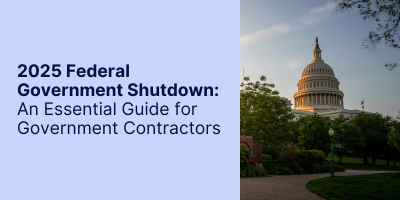
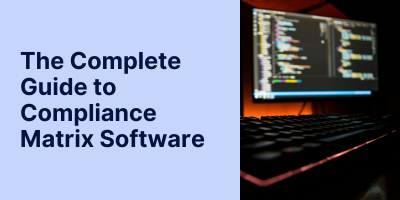
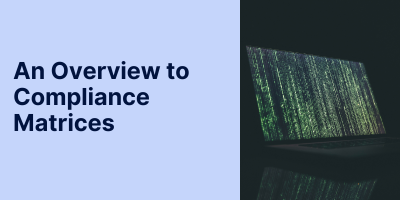
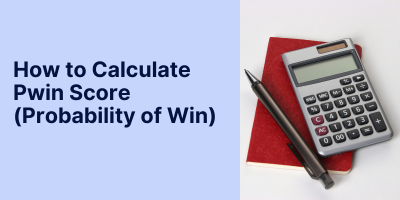
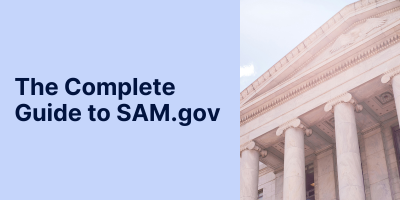
-2.png)
-2.png)
